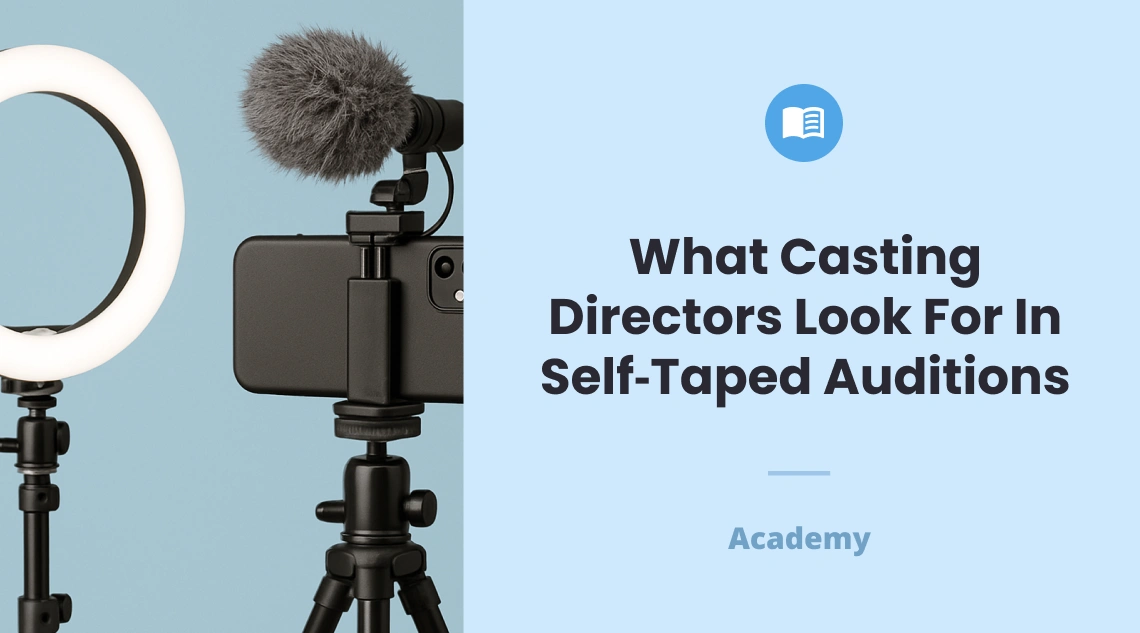Performance Of The Audition
There is no doubt that, regardless of the format in which the audition takes place, from in-person to online, casting directors will primarily rate the performance of the respective candidate from the casting call applications.
Performers should diligently prepare by using the previously given materials for their audition performance. Since the audition performance will take place without the casting director being actually present to witness it in real time, it provides the actor or model a slight advantage of potentially having more than one take before choosing the final footage to send as their self-tape audition.
Another thing excluded as well is any real-time instructions by the casting director to follow during the event, besides the ones given earlier with the invitation to audition. Yet it will also mean that the casting staff will be able to review their performance more meticulously, rating the way the performer interprets the given script and turning it into their own one-of-a-kind version that stands out amongst other candidates, instead of just reciting the given lines.
Casting directors will also be able to rewatch certain moments of the performance and discuss them amongst their staff, which, of course, would not be possible in real-time auditions. It has its perks, though - a genuinely unique and formidable performance by a candidate might get another chance through a fresh set of eyes, after being overlooked at first.
Presentation Of The Video
While there certainly are advantages, as mentioned earlier, to audition in the self-tape format, it also provides extra things to actors and models that casting directors will pay attention to that go beyond just delivering an audition performance.
The space where the self-taping takes place is essential. A messy or cluttered background can pose a distraction to the industry experts viewing the performance - even a stunning painting used as the backdrop can do more harm than good for the actor or model in question. The best way to approach the self-taping environment is by having a clean background of a neutral color. If such a wall is not available, even neatly hanging a bedsheet can do the trick for the video.
Performers should avoid filming the self-tape audition in busy surroundings, such as public places like parks, cafes, and more, for the very same reasons - it can cause distraction to not only the viewers but potentially during the process of filming for the performer themselves as well. It is also very unlikely that public spaces won’t have background noises that yet again take away the attention from the performance, in which the quality of sound is also a key component - more on that below.
A similar approach should be taken for the look of the audition candidates as well. Actors and models should avoid having extra looking clothing choices and hairstyles, unless explicitly instructed otherwise, instead opting for simple, clean clothing choices to avoid distracting the viewing casting director, and putting emphasis on the audition performance. The wardrobe decisions should also complement the background in order to avoid blending with it.
Quality Of The Video
While casting directors won’t be expecting actors or models to be full-blown videographers, certain quality standards for self-tape audition videos are being held to, and failing to follow them may significantly lower the chances of successful final results, if not immediate dismissal altogether.
It is crucial that the performer is clearly visible for the whole length of the self-tape audition. Typically this means having the camera framed from the chest and up, so that the performer's facial expressions and body language are on full display for the casting director to review during the audition. Thankfully, today's smartphones have a good enough camera to do the job just right, image quality-wise.
You might also be interested in:
In the case of having script lines to recite or any other verbal performances, it is very important to have a high audio quality for the self-tape as well. This means not just avoiding poor, muffled sound but also any distracting background noises. It is highly advisable that performers invest in a microphone of their preference to ensure that the vocal part of their performance does not go unnoticed due to technical issues.
Finally, the candidate must ensure that the self-tape audition submission video file is working in the requested format, and ideally, renamed with the key information, including the performer’s name, surname, project’s title, and the role they are trying to get cast for.




